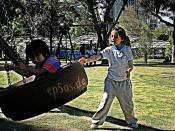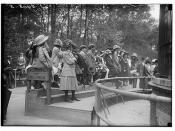Divorce and Children
According to John S. Dacey and John F. Travers, "During the early childhood year, children demonstrate intense separation anxiety and fear of abandonment by both parents, which may lead to the tendency to blame themselves for the divorce" (191).
The changes and stress associated with divorce typically cause multiple problems for all children. We think of divorce as a sequence of experiences. The conflicts and disagreements that lead to divorce undoubtedly begin long before the divorce itself and influence any children who witness any parental unhappiness. Following the divorce, parents often are less sensitive to their children as they struggle with their own needs. Their discipline becomes erratic and with the decline in the quality of parental care comes an increase in the behavior of their children.
Years ago divorce was considered a single, legal event. Parents would separate and eventually the court would grant the divorce.
As divorce began to be studied more closely, it became clear the rather than being isolated occurrence, divorce is a process unfolding over may years. It was then divided into three stages. Each with its own characteristic of life events. The three stages of divorce process are: the immediate crisis phase, the short-term after math, and the long-range period. The boundaries between these stages of divorce are not firmly drawn. For some families the crisis stage lasts only
up to a month or two after the parents physically separate, for others the stage continues for a year or two past the point of separation. Similarly, the short-term aftermath phase may end as early as six months after parental separation.
Conflict and hostility between parents continue to be common and serious sources of stress for children. Though parents live apart, the process of resolving disagreements around custody, division of property, level...


